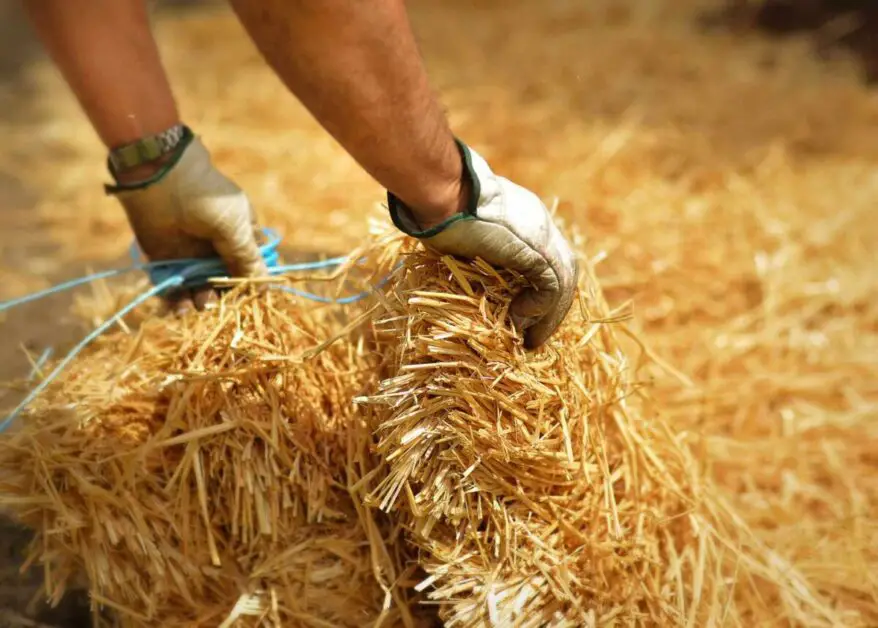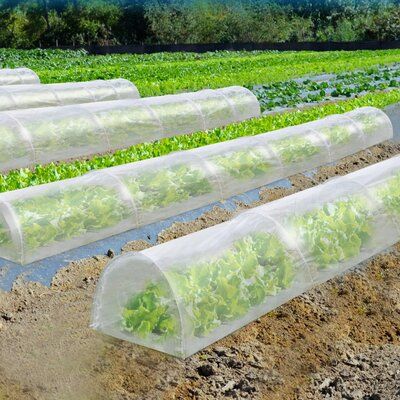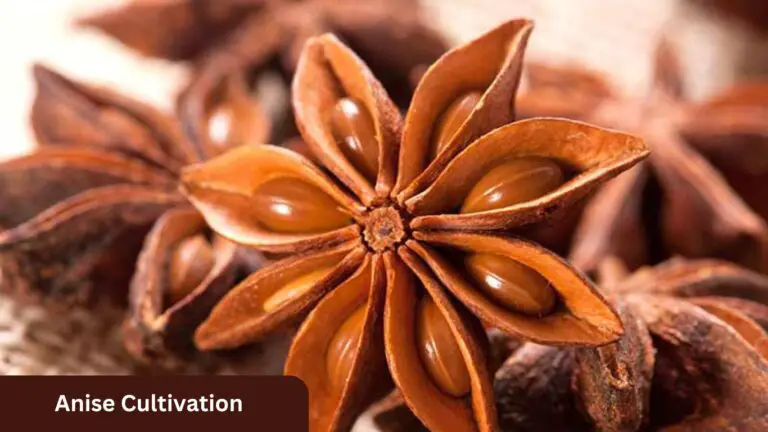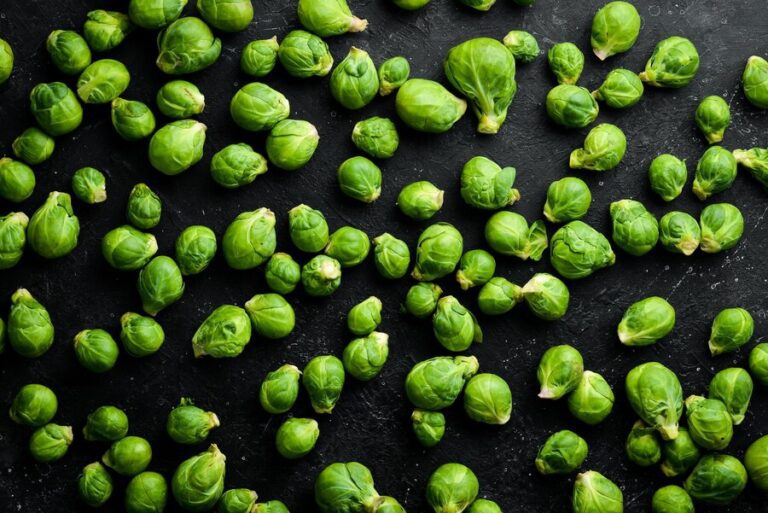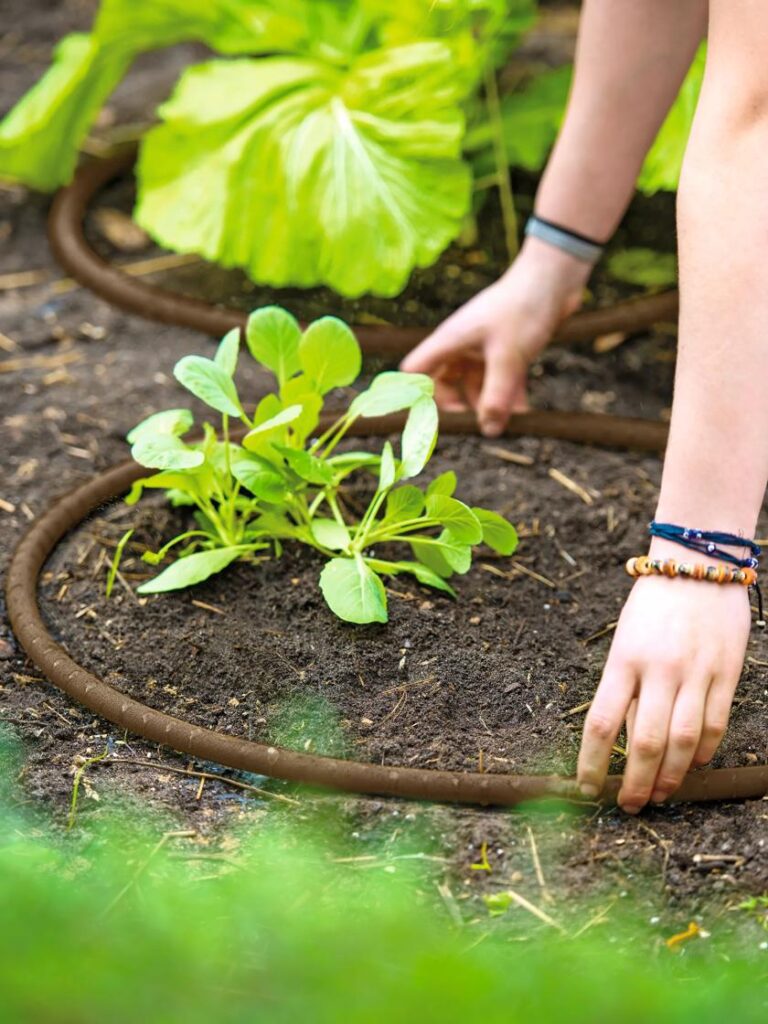Straw Mulch: Protecting Your Veggies
Did you know that a simple layer of straw mulch can work wonders for your vegetable garden? Picture this: your veggies basking in the sun, protected by a cozy blanket of straw. Using straw mulch is like giving your plants a shield against weeds, pests, and extreme weather conditions. It’s a natural, cost-effective way to nurture your garden and boost your harvest.
Join us as we uncover the secrets of using straw mulch to safeguard your veggies and promote healthy growth. With our expert advice and practical tips, you’ll be on your way to cultivating a thriving vegetable garden in no time. Let’s dive in and give your veggies the protection they deserve!
Table of Contents
Understanding the Benefits of Straw Mulch
Straw mulch is a simple yet effective way to enhance the health and productivity of your garden. By spreading a layer of straw over the soil surface, you can reap numerous benefits that contribute to the overall success of your plants.
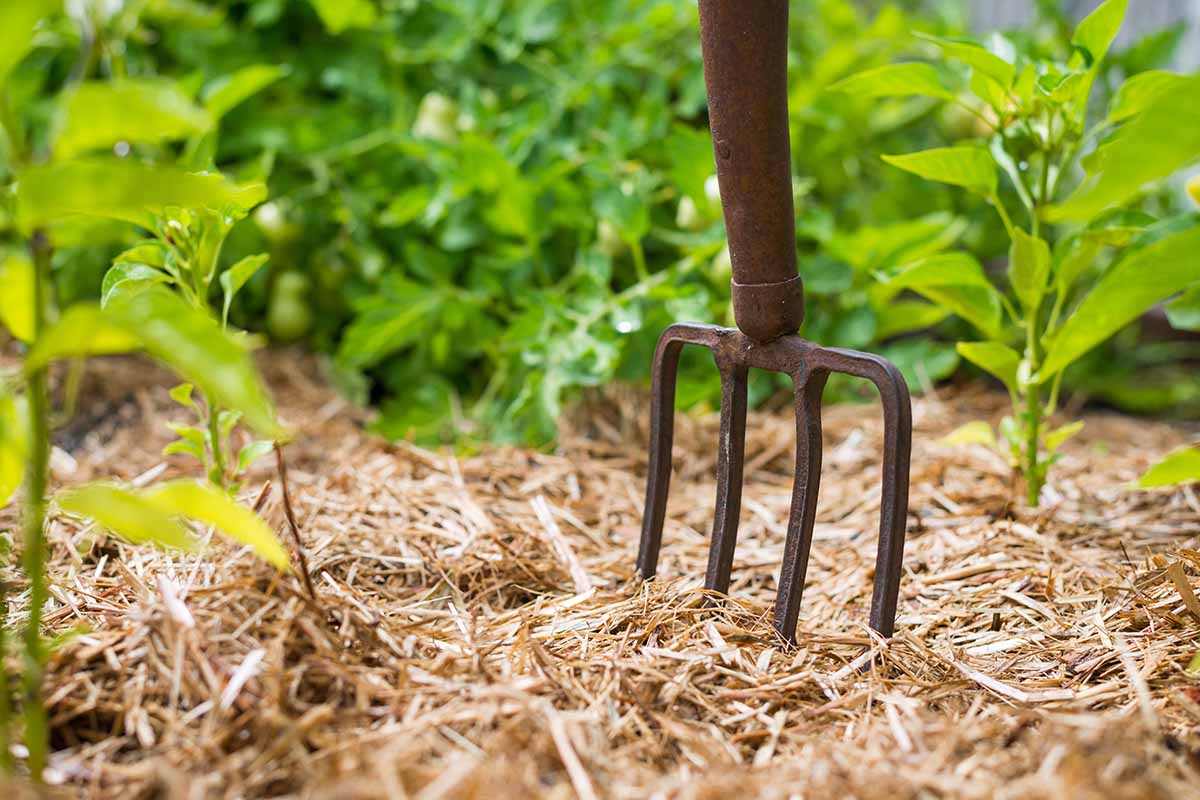
- Moisture Conservation:
- Straw mulch shields the soil from direct sunlight, reducing evaporation and maintaining consistent moisture levels, decreasing the need for frequent watering.
- The natural porosity of straw allows for better water infiltration into the soil, ensuring plants receive adequate hydration for optimal growth.
- Weed Control:
- Straw mulch acts as a physical barrier, inhibiting weed growth by blocking sunlight and preventing weed seeds from germinating.
- By creating a thick layer around plants, straw effectively suppresses weed growth, reducing the time spent on weeding and allowing plants to thrive.
- Disease Prevention:
- Straw mulch absorbs rainwater, preventing it from splashing back onto plant leaves and reducing the risk of soil-based diseases like early blight.
- It creates a barrier between plants and the soil, limiting moisture-based diseases like blossom rot and keeping fruits cleaner by preventing contact with the soil.
- Soil Health:
- Mulching with straw protects soil microorganisms and beneficial insects by providing a protective layer against the sun, reducing erosion, and preventing nutrient leaching.
- As straw decomposes, it enriches the soil by releasing nutrients that nourish plants, leading to healthier soil and plants with reduced need for synthetic fertilizers.
- Economic Benefits:
- Using straw mulch can lead to less labor-intensive gardening due to reduced watering frequency, weed control, and disease prevention.
- Straw mulch is cost-effective, readily available from local farms and garden centers, and contributes to building healthy soil over time.
By incorporating straw mulch in your garden, you can enjoy improved moisture retention, enhanced weed control, disease prevention, healthier soil, and economic benefits while reducing the time spent on maintenance tasks like watering and weeding.
After using both products, I must say that they have significantly improved the quality of my gardening experience. The EZ Straw Clean Processed Straw was incredibly easy to spread and provided excellent moisture retention for my soil, resulting in healthier plants. Additionally, it effectively prevented weed growth, saving me a lot of time and effort in maintenance.
On the other hand, the Blue Mountain Hay Organic Garden Straw exceeded my expectations with its pet-friendly and GMO-free features, ensuring the safety of my beloved pets while enhancing the overall soil quality. Its ability to retain moisture and cool the soil during warmer months proved to be invaluable, allowing my cool-season crops to thrive for longer periods. Overall, both products have proven to be essential additions to my gardening arsenal, and I highly recommend them to any avid gardener looking to improve their gardening outcomes.
✅ Multi-Purpose: This product offers versatility with numerous applications, including pet bedding, nest material, gardening mulch, packing material, crafts, and more, providing great value for its cost.
✅ Convenient Packaging: Packaged in a small bale, the EZ-Straw is easy to handle and store, with a UV-protected plastic bag that ensures longevity, making it convenient for regular use without deterioration.
✅ Safe for Children and Pets: Being safe for children and pets, it can be confidently used in pet beds and cages without concerns about harmful substances.
✅ High Customer Ratings: With a high rating of 4.5 stars and over 1,000 reviews, it’s evident that many customers have found satisfaction with this product, indicating its reliability and effectiveness.
❌ Limited Quantity Options: The availability of only one size option (1 cubic foot) might not cater to the needs of all customers, especially those with larger projects or requirements for bulk purchases.
❌ Mixed Maneuverability Ratings: Although the product is easy to spread according to most users, there are a few who have mentioned challenges in maneuverability, indicating a slight inconsistency in user experience.
❌ Potential Packaging Issues: A few customers have reported receiving damaged or incomplete packages, suggesting that there could be occasional issues with packaging or delivery that may need improvement.EZ-Straw Just Straw Clean Processed Straw
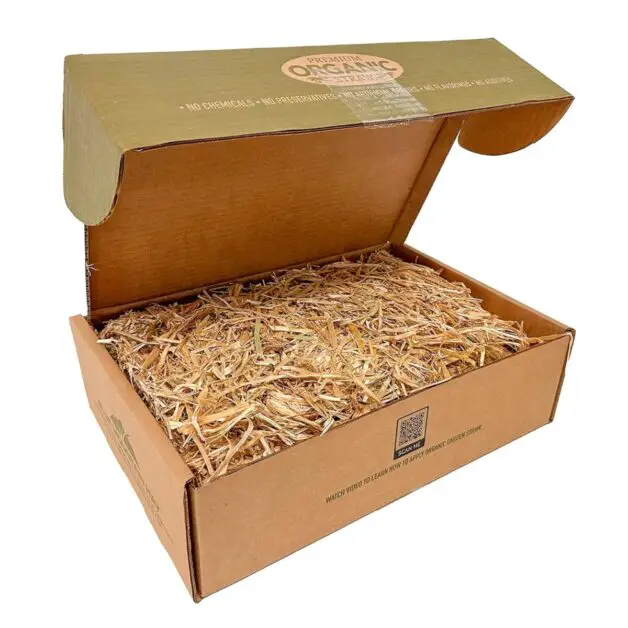
✅ Weed Barrier: This organic garden straw acts as an effective weed barrier by blocking out sunlight, preventing weed growth, and inhibiting the germination of hidden weed seeds, thereby reducing the need for frequent weeding and saving on high summer water bills.
✅ Nutrient Enrichment: As the straw decomposes over time, it gradually releases nutrients into the soil, improving soil quality and promoting healthier plant growth. This natural fertilization process enhances the overall health and productivity of gardens, flower beds, and lawns.
✅ Moisture Retention: The organic garden straw helps retain moisture in the soil, reducing the frequency of watering and ensuring that plants have adequate hydration, especially during hot summer months.
✅ Pet and Child-Friendly: Since it contains no chemical additives, this garden straw is safe for pets and children. It can also be used for various purposes, including arts and crafts projects, autumn decorations, or as organic fertilizer for indoor plants.
❌ Limited Coverage: The 10lb size option may not be sufficient to cover larger gardening areas, such as expansive flower beds or lawns, requiring multiple purchases or opting for larger size options, which can add to the overall cost.
❌ Packaging Concerns: Some users have reported issues with packaging, such as receiving damaged or incomplete packages, which could affect the quality and usability of the product upon arrival.
❌ Application Challenges: Applying the garden straw effectively as a weed barrier and moisture retainer may require some effort and time, particularly when covering larger areas or integrating it between plants in a garden bed.
❌ Potential for Unwanted Growth: While the garden straw helps prevent weed growth, there is a possibility of unwanted plant seeds getting trapped and germinating within the mulch, requiring periodic inspection and maintenance to address any emerging weeds.
Choosing the Right Type of Straw for Your Mulching Needs
- Plant-Specific Needs:
- Different plants have varying requirements for mulch. Research the needs of your plants to choose straw rich in nitrogen or carbon content accordingly.
- Climate Considerations:
- Select straw based on your climate. Moisture-resistant straw suits rainy areas, while heat-resistant straw is ideal for hot and dry climates.
- Mulching Goals:
- Define your mulching objectives like weed suppression, moisture conservation, or soil fertility enhancement.
- Choose straw types that align with your goals to achieve optimal results in your garden.
- Soil Health Benefits:
- Mulching with straw protects soil microorganisms and beneficial insects, reducing erosion and nutrient leaching.
- As straw decomposes, it enriches the soil with nutrients, promoting healthier plants and reducing the need for synthetic fertilizers.
By considering plant needs, climate factors, and mulching goals when selecting the right type of straw for your garden, you can effectively enhance soil health, promote plant productivity, and save time on maintenance tasks like watering and weeding. Making an informed decision about the type of straw to use will benefit your garden’s overall health and productivity in the long run.
Step-by-Step Guide to Applying Straw Mulch in Your Garden
When it comes to applying straw mulch in your garden, a step-by-step guide can help ensure that you achieve the desired results. Here are a few key steps to follow:
1. Prepare the area: Before applying straw mulch, it’s important to prepare the area by removing any existing weeds or debris. This will help create a clean and healthy environment for your plants.
2. Water the soil: It’s a good idea to water the soil thoroughly before applying the straw mulch. This will help the mulch stay in place and provide better insulation and moisture retention for your plants.
3. Spread the mulch: Take a generous amount of straw mulch and spread it evenly around your plants. Aim for a layer that is about 2 to 3 inches thick. Be careful not to cover the stems of your plants, as this can promote rotting or disease.
4. Mulch around the base: Make sure to mulch the area around the base of your plants, extending the mulch layer slightly beyond the drip line. This will help suppress weed growth and conserve moisture in the root zone.
5. Maintain the mulch: As time goes on, the straw mulch may break down and start to compress. It’s important to replenish the mulch layer as needed to maintain its benefits. Additionally, keep an eye out for weeds and remove them promptly to prevent competition with your plants.
By following these steps, you can effectively apply straw mulch in your garden and enjoy the numerous benefits it offers. From conserving soil moisture to suppressing weed growth, straw mulch is a valuable tool for any gardening enthusiast. So, give it a try and see the difference it can make in your garden!
Having used the Truper 30-Inch 30330 Tru Tough Manure/Bedding Fork extensively, I can confidently attest to its exceptional quality and functionality. The sturdy construction and durable materials ensure longevity, even when tackling demanding tasks such as cleaning coops or spreading mulch. The D-grip handle offers a comfortable and secure hold, enhancing control and reducing fatigue during prolonged use.
Despite its robustness, the fork remains relatively lightweight, making it easy to maneuver around the garden. However, I did encounter some mixed opinions regarding the handle among other users, although personally, I found it to be well-engineered and suited to its purpose. Overall, the Truper fork exceeded my expectations, delivering excellent value for the investment and proving to be an indispensable tool for any gardening enthusiast.
- Durability: The Truper 30-Inch 30330 Tru Tough Manure/Bedding Fork boasts solid construction, making it durable and long-lasting, as evidenced by numerous user reviews praising its sturdiness.
- Functionality: Users appreciate the functionality of this fork, with many noting its effectiveness in tasks such as cleaning coops, handling manure, and spreading mulch.
- Ease of Use: Equipped with a D-handle made from North American ash, this fork offers a comfortable grip and balance, enhancing ease of use during prolonged periods of work.
- Versatility: With its 10-tine design, the fork is versatile enough to handle various gardening and farming tasks, including bedding and mulching, making it a valuable tool for any outdoor enthusiast.
- Maintenance: The fork is easy to maintain, requiring only a simple spray clean with a garden hose and a coat of silicone spray to keep it in optimal condition.
- Price: Some users may find the initial cost of the Truper fork relatively high compared to similar products on the market, potentially deterring budget-conscious buyers.
- Weight: While the fork is generally praised for its durability, some users have mentioned that it may feel heavy, particularly when used for extended periods or with force, which could lead to fatigue or discomfort.
- Longevity: Despite its sturdy construction, a few users have reported instances of the fork cracking or failing after heavy use, suggesting that it may not withstand extremely demanding tasks or conditions over an extended period.
- Delivery Time: Several users have mentioned slow delivery times as a drawback, indicating that improvements in shipping speed could enhance the overall customer experience.
- Specific Use Cases: While versatile, the fork’s design may be better suited to certain tasks than others, with some users experiencing limitations when using it on heavy clay soil or for aerating lawns.
How Straw Mulch Helps Conserve Soil Moisture
Straw mulch is a valuable tool in conserving soil moisture in your garden. When applied properly, it helps to reduce evaporation by providing a protective layer on the soil surface, acting as a barrier between the sun’s rays and the soil. This helps to keep the soil cooler and slower to dry out, allowing plants to access moisture for a longer period of time.
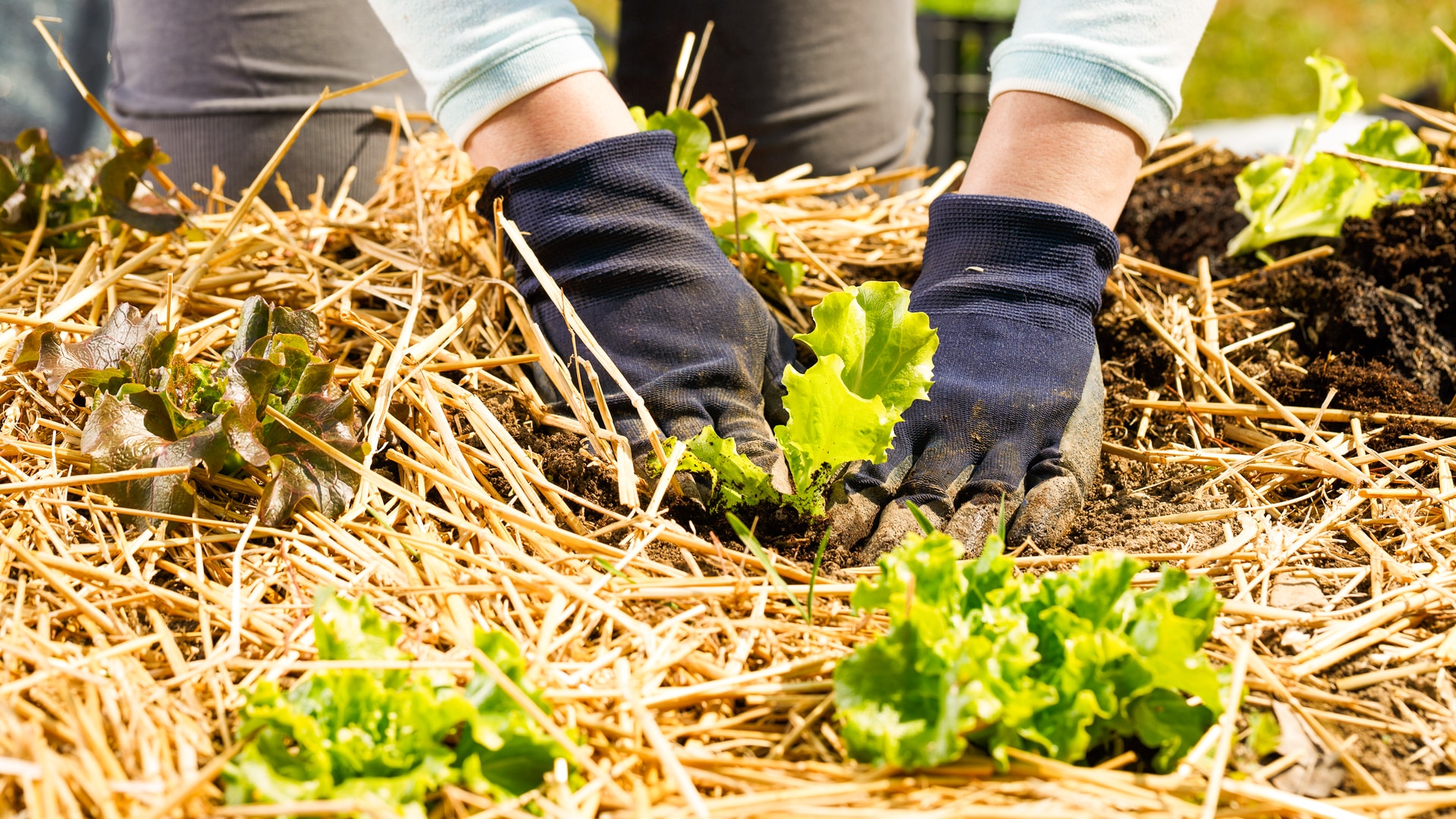
Impact: Decreases water loss by 25-50%.
Explanation: Straw mulch acts as a protective layer, shielding the soil from direct sunlight. This helps keep the soil cooler and slows down evaporation, allowing plants to access moisture for longer.
Impact: Increases soil moisture retention by 10-20%.
Explanation: The mulch creates tiny channels that facilitate water movement into the soil. This reduces runoff and promotes better water absorption, especially useful in clay soils or on slopes.
Impact: Reduces weed emergence by 70-90%.
Explanation: The mulch prevents weed seeds from germinating and competing with your plants for water.
Impact: Helps maintain soil temperature by 5-10°C.
Explanation: Straw mulch acts as insulation, keeping the soil cooler during hot days and warmer during cold nights.
Impact: Decreases erosion rates by 50-80%.
Explanation: The mulch provides a protective barrier, preventing soil from washing away during heavy rains.
In the next section, we’ll explore how straw mulch contributes to effective weed control. 🌱🌿
Weed Control: How Straw Mulch Keeps Unwanted Plants at Bay
Mulching is an essential practice in gardening as it aids in weed control and helps maintain a healthy and tidy garden. One highly effective type of mulch for weed control is straw mulch. Straw mulch acts as a barrier between the soil and unwanted plants, preventing their growth and minimizing the need for manual weeding.
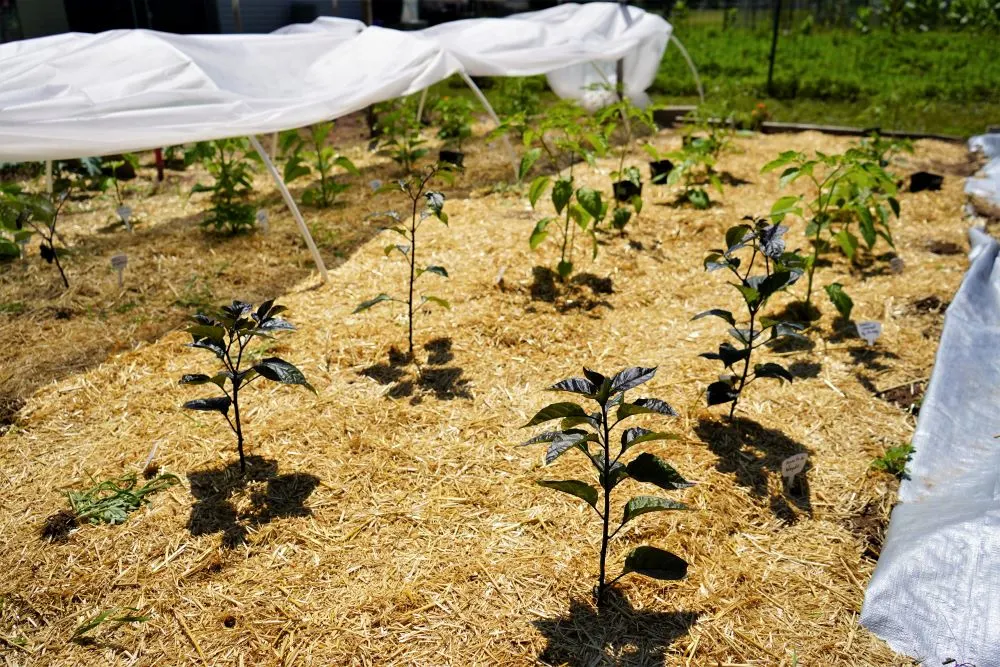
Impact: Straw mulch blocks sunlight from reaching the soil surface.
Explanation: Weeds need sunlight for photosynthesis. By covering the soil with straw mulch, we prevent weed seeds from germinating and growing.
Impact: Straw mulch conserves soil moisture.
Explanation: Weeds thrive in moist conditions. Straw mulch keeps the soil damp, making it less favorable for weed growth.
Impact: Prevents weed seeds from accessing the soil.
Explanation: Properly applied straw mulch keeps weed seeds dormant, reducing their ability to germinate.
Impact: Shields against weed invasion.
Explanation: Straw mulch acts as a barrier, preventing weed seeds from establishing themselves in the garden.
Remember, straw mulch not only keeps your garden tidy but also helps maintain a healthier plant environment! 🌱🌿
Preventing Soil Erosion with Straw Mulch
Soil erosion can be a significant issue in gardens and agricultural fields, leading to the loss of topsoil and the degradation of soil quality. However, implementing a straw mulch can be an effective solution to prevent soil erosion and protect the health of your soil.
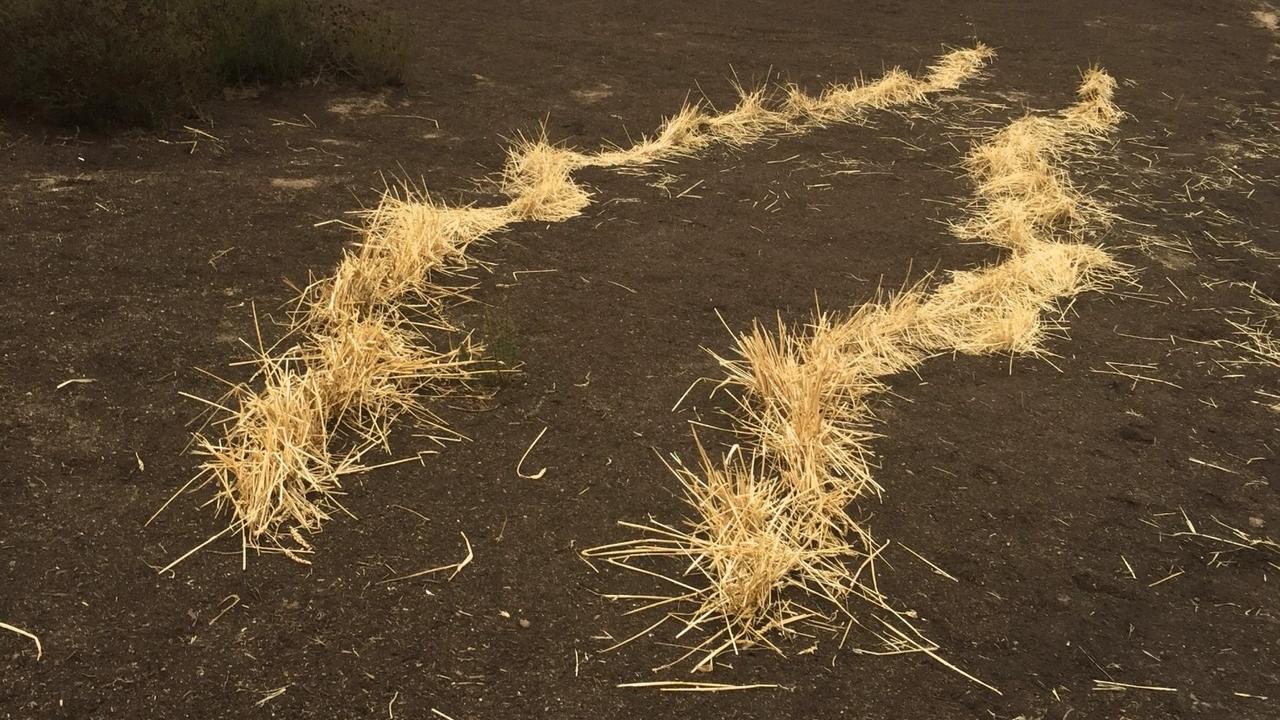
- Protective Barrier:
- Impact: Acts as a shield against heavy rain, wind, and other environmental factors.
- Explanation: The thick layer of straw slows down water velocity, allowing gradual penetration into the soil and reducing runoff.
- Stabilizes Soil:
- Impact: Prevents soil particles from being carried away.
- Explanation: By limiting excessive water movement, straw mulch keeps the soil stable and intact.
- Improves Soil Structure:
- Impact: Enhances soil health.
- Explanation: As straw decomposes, it adds organic matter, improving moisture retention and nutrient availability. Beneficial microorganisms and earthworms thrive in this environment.
Remember, a well-applied straw mulch not only prevents erosion but also contributes to healthier, more fertile soil! 🌱🌿
Enhancing Soil Health and Fertility through Straw Mulching

- Retains Moisture and Regulates Temperature:
- Impact: Creates an ideal environment for beneficial soil organisms.
- Explanation: Straw mulch keeps the soil moist and moderates temperature fluctuations, allowing earthworms and microorganisms to thrive.
- Suppresses Weed Growth:
- Impact: Prevents weeds from competing with your plants.
- Explanation: The mulch acts as a barrier, stifling weed germination and growth.
- Efficient Resource Utilization:
- Impact: Helps plants access nutrients and water more efficiently.
- Explanation: By reducing weed competition, your plants can utilize available resources better, leading to healthier crops.
- Sustainable Practice:
- Impact: Reduces manual weeding and herbicide use.
- Explanation: Straw mulching supports environmentally-friendly gardening practices.
- Ecosystem Benefits:
- Impact: Minimizes water runoff and erosion.
- Explanation: Improved moisture retention benefits nearby water sources. Increased organic matter also helps sequester carbon dioxide, contributing to climate change mitigation.
Remember, straw mulching is a win-win for your garden and the planet! 🌱🌿
Protecting Plants from Extreme Temperatures with Straw Mulch
Straw mulch is a valuable tool in protecting plants from extreme temperatures, especially during cold weather. Here are some key points on how straw mulch can help safeguard plants:
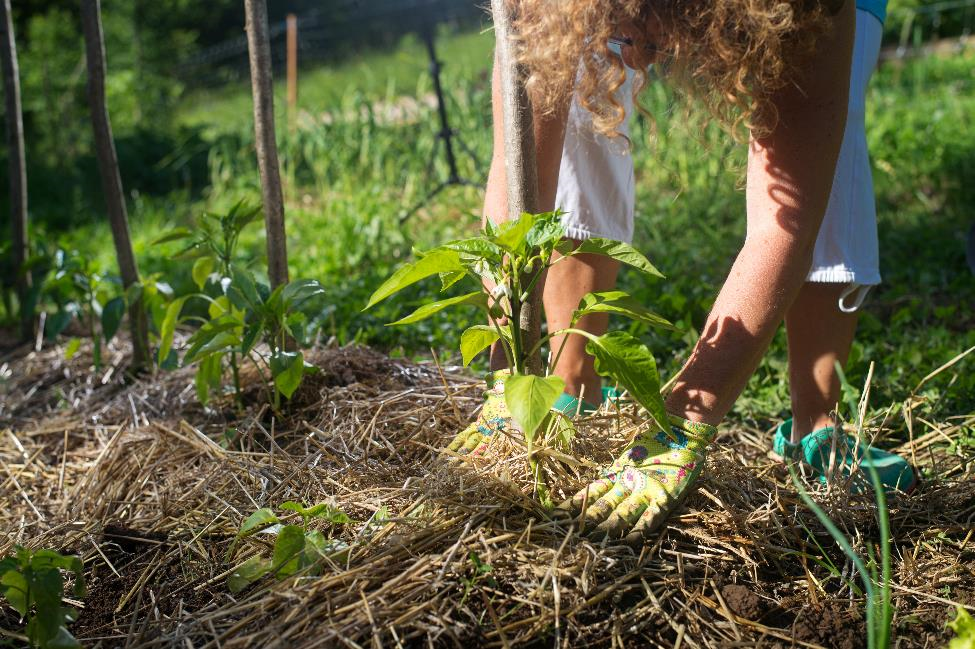
- Insulation: Straw mulch acts as an excellent insulator during winter, protecting plants from freezing temperatures by providing a layer of insulation that prevents heat loss.
- Root Protection: Mulching with straw helps shield plant roots from extreme cold, maintaining a more stable soil temperature and preventing premature freezing and thawing that can harm roots.
- Application: When applying straw mulch for winter protection, ensure a depth of about 2 inches around the base of plants, leaving space around the stem to prevent moisture buildup and potential rot.
- Plant Types: Different plants may require varying levels of protection. For instance, tender perennials like chrysanthemums can be covered with about one inch of straw during cold winters to safeguard them.
- Heat Shield:
- Impact: Prevents soil from absorbing excessive heat during hot summer days.
- Explanation: Heat-sensitive plants benefit from a cooler root zone, reducing stress and promoting growth.
- Winter Blanket:
- Impact: Provides insulation to preserve heat during cold winter nights.
- Explanation: Protects plants from freezing temperatures and frost damage.
- Versatile Benefits:
- Impact: Beyond temperature regulation, straw mulch offers additional advantages.
- Explanation: It conserves soil moisture, suppresses weeds, prevents erosion, and enhances soil health.
By utilizing straw mulch effectively, gardeners can create a protective barrier against cold temperatures, maintain soil temperature stability, and safeguard plant roots from frost damage during winter months.
Best Practices for Maintaining Straw Mulch in Your Vegetable Garden
Maintaining straw mulch in your vegetable garden is crucial for ensuring its effectiveness and maximizing its benefits. Here are some best practices to keep in mind:
1. Regularly check the moisture levels: One of the main advantages of straw mulch is its ability to conserve soil moisture. However, it’s essential to monitor the moisture levels underneath the mulch regularly. Use a moisture meter or simply dig your finger into the soil to assess if it’s too dry or too wet. Adjust your watering schedule accordingly, ensuring that the soil remains consistently moist but not waterlogged.
2. Keep the mulch layer thick: To effectively suppress weeds and conserve moisture, it’s important to maintain a thick layer of straw mulch. The recommended thickness is around 3-4 inches. As the mulch decomposes over time, it will naturally become thinner. So, replenish the straw mulch as needed to maintain the desired thickness.
The following table explains about the best practices for maintaining straw mulch:
| Maintenance Practice | Frequency | Quantitative Value |
|---|---|---|
| 1. Replenishing Mulch | Every 2-3 months | Add 1-2 inches of new straw mulch layer. |
| 2. Weed Removal | Weekly | Remove weeds as soon as they appear. |
| 3. Moisture Monitoring | Biweekly | Ensure soil remains consistently moist. |
| 4. Pest Inspection | Monthly | Check for signs of pests or diseases. |
| 5. Fluffing Mulch | Monthly | Loosen and fluff mulch to improve aeration. |
| 6. Adjusting Mulch Depth | Seasonally | Increase mulch depth in colder months. |
Remember, proper maintenance of straw mulch will significantly contribute to the health and productivity of your vegetable garden, leading to abundant harvests and a thriving ecosystem.
Watch video for more information:
FAQ
What are the benefits of using straw mulch in gardening?
Straw mulch offers several benefits such as conserving soil moisture, preventing weed growth, reducing soil erosion, enhancing soil health and fertility, protecting plants from extreme temperatures, and providing a barrier against pests.
How do I choose the right type of straw for mulching?
When selecting straw for mulching, consider factors such as the availability of straw in your area, the type of plants you are growing, and the purpose of mulching. Common types of straw include wheat, barley, oat, rice, and rye straw. Each type has its own characteristics, so choose one that suits your specific needs.
Can you provide a step-by-step guide to applying straw mulch in a garden?
Here is a step-by-step guide to applying straw mulch in your garden:
1. Prepare the soil by removing any existing weeds or debris.
2. Water the area where you plan to mulch thoroughly.
3. Spread a layer of straw mulch around your plants, ensuring a thickness of about 2-4 inches.
4. Keep the mulch about 2 inches away from the stems of the plants to prevent moisture-related issues.
5. Reapply straw mulch as needed throughout the growing season or whenever it starts to thin out.
How does straw mulch help conserve soil moisture?
Straw mulch acts as a protective layer that helps to retain moisture in the soil. It prevents water from evaporating quickly, reducing the need for frequent watering and helping to maintain consistent moisture levels for plant roots.
How does straw mulch control weeds in the garden?
Straw mulch acts as a natural weed barrier by blocking sunlight, which inhibits weed germination and growth. It also makes it harder for weed seeds to come into direct contact with the soil, reducing their chances of sprouting.
Can straw mulch prevent soil erosion?
Yes, straw mulch can help prevent soil erosion. When applied to bare soil, it acts as a protective layer that shields the soil from the impact of heavy rain or wind, reducing the likelihood of erosion.
How does straw mulching enhance soil health and fertility?
Straw mulch decomposes slowly over time, adding organic matter to the soil. As it breaks down, it releases nutrients, improves soil structure, and encourages beneficial microbial activity, thus enhancing soil health and fertility.
How does straw mulch protect plants from extreme temperatures?
Straw mulch acts as an insulating layer, protecting plant roots from extreme temperatures. It helps to keep the soil cooler in hot weather and provides a buffer against frost and freezing temperatures in colder climates.
What are the best practices for maintaining straw mulch in a vegetable garden?
To maintain straw mulch in your vegetable garden, regularly check the thickness and condition of the mulch. If it becomes too thin, add more straw to maintain the desired depth. Also, periodically check for weed growth and remove any weeds that may have managed to penetrate the mulch.

Studied Agricultural Engineering-Plant Protection at University of California, Davis.
Head of Content writing team at Southelmontehydroponics.com

